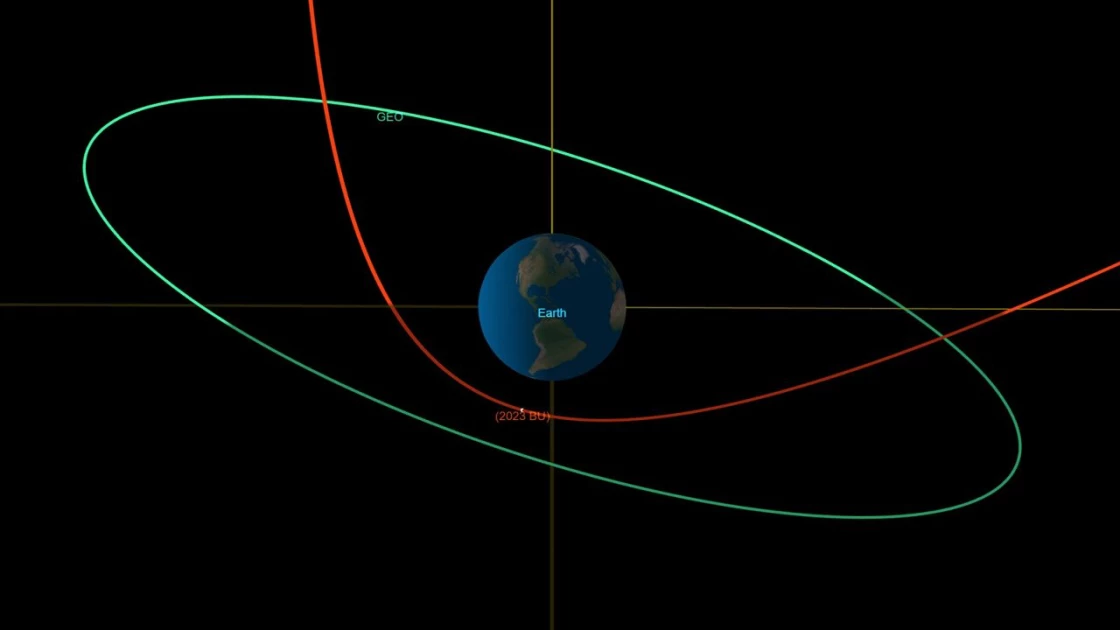Newly discovered asteroid makes one of the closest approaches of Earth

A NASA graphic shows the orbital path of asteroid 2023 BU in red as it makes a close approach of Earth. PHOTO/COURTESY: CNN

Audio By Vocalize
An asteroid the size of a box truck made one of the closest passes of planet Earth ever recorded.
The small near-Earth asteroid, called 2023 BU, zipped over the southern tip of South America at 7:27 p.m. ET Thursday about 3,540 kilometers above Earth’s surface.
This distance was well within
the orbit of global satellites.
There
was no risk of the asteroid striking Earth, according to NASA.
If the space rock, which is estimated to be 3.5 to 8.5 meters across, had headed for Earth, it would have transformed into a fireball once it entered the atmosphere and disintegrated.
Any remaining debris would have fallen to the ground as small meteorites, according to the space agency.
Amateur astronomer Gennadiy Borisov spotted the asteroid from the MARGO observatory in Nauchnyi, Crimea, on Saturday. Borisov had previously discovered the interstellar comet 2I/Borisov in 2019.
The Minor Planet Center, which tracks the positions of minor planets, comets and space rocks, also received recent reports of observations of the asteroid 2023 BU.
Once enough observations were registered, the center announced the discovery of the asteroid. Under the auspices of the International Astronomical Union, the organization is responsible for the identification, designation and orbital data for such celestial objects.
Observatories around the world made further observations after the discovery’s announcement Sunday, allowing for precise refining of 2023 BU’s orbit.
The Scout impact hazard assessment system at NASA’s Center for Near Earth Object Studies analyzed the data from the Minor Planet Center and predicted that the asteroid would miss Earth.
The Center for Near Earth
Object Studies, located at the Jet Propulsion Laboratory in Pasadena,
California, calculates the trajectory of all known near-Earth asteroids to
assess their potential impact on our planet.
“Scout
quickly ruled out 2023 BU as an impactor, but despite the very few
observations, it was nonetheless able to predict that the asteroid would make
an extraordinarily close approach with Earth,” said Davide Farnocchia, a
navigation engineer at JPL who developed Scout, in a statement. “In fact, this
is one of the closest approaches by a known near-Earth object ever recorded.”
Earth’s
gravity changes the trajectory of asteroids, but 2023 BU came so close to our
planet that its orbit around the sun changed after the encounter.
Before Thursday’s close pass, the asteroid had a circular orbit that took about 359 days to complete around the sun.
Now, scientists estimate that the asteroid’s orbit is elongated, extending that single orbit of the sun to 425 days.


Leave a Comment